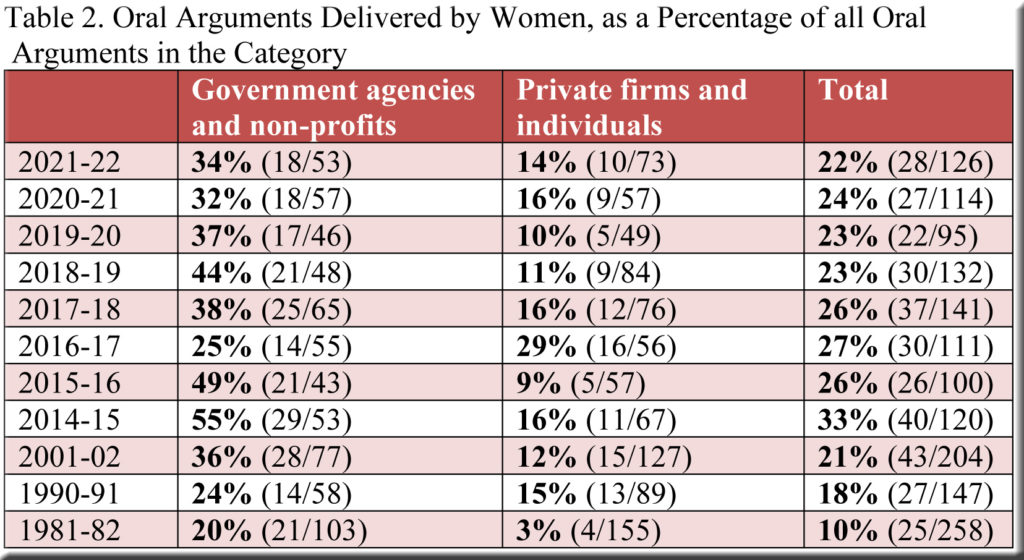Three years have passed since the previous post in this series, and it’s time for another look at the frequency with which women have been delivering oral arguments at the supreme court.
During the last decades of the 20th century women accounted for a steadily increasing share of oral arguments—10% in 1981-82, 18% in 1990-91, and 21% in 2001-02—before surging to 33% in 2014-15. However, this proved to be the high-water mark as the percentage receded thereafter and has settled at approximately 23% over the last four terms (Table 1).
For decades, women in non-profit organizations and government agencies presented oral arguments at a much higher rate than did women in private firms. This changed dramatically in 2016-17 when the figure in the “government agencies and non-profits” column of Table 2 fell to 25%—while jumping to 29% in the “private firms and individuals” column. As it turned out, though, this was an aberration. In every subsequent year, women from government agencies and non-profits again appeared before the justices more frequently than did their counterparts in the other category. They did so both in larger numbers and as a greater percentage of the oral arguments conducted by all attorneys (male and female) in their places of employment.
Most of the oral arguments in the “government agencies and non-profits” category came from lawyers in two agencies: the Public Defender and the Department of Justice (primarily the Attorney General’s Office but also the Solicitor General’s Office during its brief period of existence).[1] Women from the Public Defender’s Office delivered oral arguments at an especially high rate—nearly always exceeding that for women in the Department of Justice, and often more than 50% of the Public Defender’s oral arguments in a given term. The peak for women public defenders came in 2015-16 (75% of their office’s oral arguments), and for women from the Department of Justice it arrived the previous year (55% of the DOJ’s oral arguments). The figures have slipped recently, as shown in Table 3, and it will be interesting to see if women from either office again approach these summits in years to come.
[1] As noted in earlier posts, the “government agencies and non-profits” category also includes such organizations as Legal Action of Wisconsin, Great Lakes Legal Foundation, the Wisconsin Institute for Law and Liberty, and various city and county attorneys’ offices.



Speak Your Mind